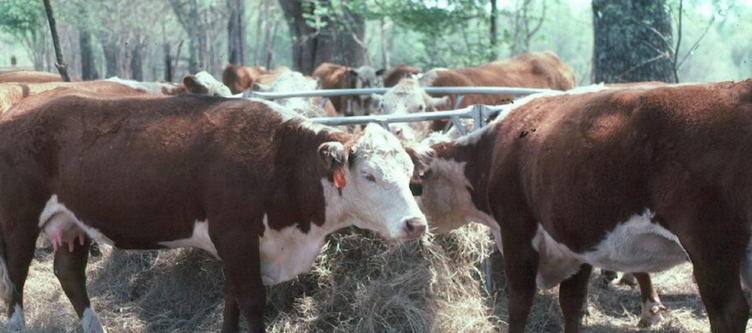
Most of the cost of raising livestock is associated with feeding them. Pasture forage is generally the least expensive source of nutrition, which provides an incentive for producers to seek options to extend grazing to the extent possible. Using warm-season and cool-season forages, using annuals to provide grazing when perennials are not productive, and stockpiling forage are three of the most commonly-used strategies for extending grazing.
However, most producers are not able to provide year-around grazing, so some type of supplemental feed must be provided when pasture growth is not available. Interestingly, surveys have shown that producers from many different states generally report that they provide supplemental feed for around 120 days per year on average. (That number could be significantly reduced in most cases, but that will not be the focus of this article.) On most livestock farms, hay is the most logical stored feed to use when pasture forage is not available.
Hay storage and hay feeding are both important considerations because (obviously) hay is only of nutritional benefit when it is consumed by an animal. In the humid portion of our nation, hay needs to be protected from the elements during storage. Otherwise, there can be significant dry matter loss, forage quality is lower, and the amount of waste during feeding is increased because animals are more selective. It seems that in recent years many cattlemen have paid more attention to hay storage (although there is still much room for improvement!), but it seems there has been little additional focus on how hay is fed.
On the cattle farm in western Kentucky where I grew up, there was little hay feeding loss. Small bale hay was stored in the center of the barn and there were bunks along the sides of the barn, but they were still under shelter. We fed hay once or twice a day, and would put out exactly the number of bales my Dad felt was appropriate.
Today most hay is put up in large bales and, especially in the Deep South, is mostly fed on sod. Some feeding losses from trampling, refusal, and leaf shatter is inevitable, and there will be more loss when feeding hay on sod than in a feed bunk. However several principles should be considered. One alluded to earlier is that hay waste will be lower if hay is protected from weathering during storage because rejection of hay by the animals will be less.
Also, as was evident with the approach used on our farm, a key principle of feeding hay efficiently is to limit the amount of hay to which the animals have access at one time. When access is limited, the animals have less opportunity to trample and soil the hay. With large hay packages, many producers are tempted to put out enough hay to last the animals for several days, which inevitably results in greatly increased losses.
Placing a barrier between animals and the hay, such as a hay ring, has been shown to be quite helpful and economically desirable. A cone, trailer, or cradle feeder design is even more effective due to reduced amounts of hay falling on the ground. Some producers unroll hay on sod, which can also greatly reduce losses (at least during good weather).
It is desirable to feed hay in in less fertile fields and rotate feeding spots to minimize treading damage, reduce erosion hazard, and facilitate more even recycling of nutrients. If hay needs to be fed in a particular location all winter, it is desirable to provide a footing of crushed gravel or concrete that can minimize mud problems.
Prioritization of hay feeding is worthwhile. In particular, feeding hay stored outside before feeding hay stored inside is desirable because once outside hay is fed, storage losses stop. Also, for hay stored outside, it makes sense to feed hay that is easily penetrated by rain before feeding hay that will shed rain well. Finally, it makes sense to feed high quality hay stored outside before feeding lower quality hay stored outside because losses with higher quality hay are more costly.
Hay storage and feeding losses are real, not potential losses. That is, all of the thought, time, energy, and expense involved in producing the hay have been invested, and whatever losses occur are of real consequence. Any livestock producer who is seriously interested in maximizing cost effectiveness in his or her operation needs to focus on all aspects of hay. Losses that occur during storage and feeding are expensive, but relatively easy to minimize.
__________________
Foraging Ahead is a column presented by Ragan & Massey and written by Dr. Don Ball, Professor Emeritus at Auburn University. Dr. Ball is one of the authors of the popular book “Southern Forages” available here.
